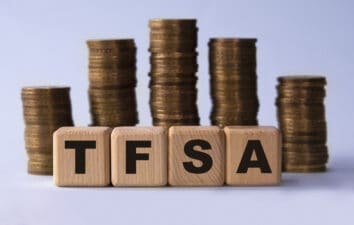Investors buy Canadian real estate investment trusts (REITs) primarily for income. H&R REIT (TSX:HR.UN) and BTB REIT (TSX:BTB.UN) are diversified REITs. They conveniently pay monthly cash distributions, which make them potentially nice income investments in the Tax-Free Savings Account (TFSA). Both were hit by the pandemic and consequently cut their dividends. One pays a safer dividend today. Let’s compare the two to see which may be a better buy.
H&R REIT is cheaper
Having a market cap of $4.7 billion makes H&R REIT one of the largest REITs in Canada. After reducing its office exposure in Calgary, the REIT has about 442 properties. Based on the fair value of its investment properties, H&R REIT’s portfolio has 35% allocated to retail properties, 32% to office properties, 25% to residential, and 8% to industrial.
Consequently, the quality of the REIT’s office portfolio has improved. The office property sales meaningfully reduced the diversified REIT’s exposure to Ovintiv, a large oil and gas producers in North America, from 12% to 2% and allowed H&R REIT to improve its leverage ratio. Additionally, this portfolio has a high occupancy of 99% and a long average remaining lease term to maturity of close to 12 years. It also enjoys a cap rate of almost 6.6%.
H&R REIT’s retail portfolio is decent. It has a high occupancy of 90% and a long average remaining lease term to maturity of more than six years. It also enjoys a cap rate of almost 6.8%. Its industrial portfolio is robust with a high occupancy of almost 97%, an average remaining lease term to maturity of about six years, and a cap rate of almost 5.3%. Its residential portfolio has assets in the U.S. with an average age of about 6.5 years and an occupancy rate of approximately 89%.
Overall, H&R REIT enjoys a cap rate of almost 6.1%. Notably, the dividend stock trades at a discount from its normal levels because it cut its cash distribution by about 50% during the pandemic. At $16.38 per unit, it offers a 4.2% yield on a payout ratio of approximately 45%. So, there’s room for the cash distribution to recover and for price appreciation for long-term investors.
BTB REIT yields +7%
Compared to bigger peer H&R REIT, BTB REIT is much smaller with a market cap of only $299 million. The overall portfolio has about 65 properties with a high committed occupancy of 92%. Its net operating income (NOI) is diversified as follows: 54% from office properties, 32% from retail properties, and almost 14% from industrial properties. Its portfolio is concentrated in Montreal (51% of NOI), Quebec (33%), and Ottawa (16%).
During the pandemic, the diversified REIT cut its cash distribution by close to 29%, which wasn’t nearly as bad as H&R REIT. As a result, it provides a higher yield and maintains a payout ratio that is also higher than H&R REIT’s. Its payout ratio this year is estimated to be roughly 73%. The payout ratio should be sufficient to protect its juicy yield of 7.4%.
The Foolish investor takeaway
Income investors may be more attracted to BTB REIT for its higher yield, which doesn’t appear to be in danger. However, between the two diversified REITs, H&R REIT is the better buy. It offers a bigger margin of safety, provides a safer yield, and could potentially deliver higher total returns in the near term due to its cheaper valuation.







